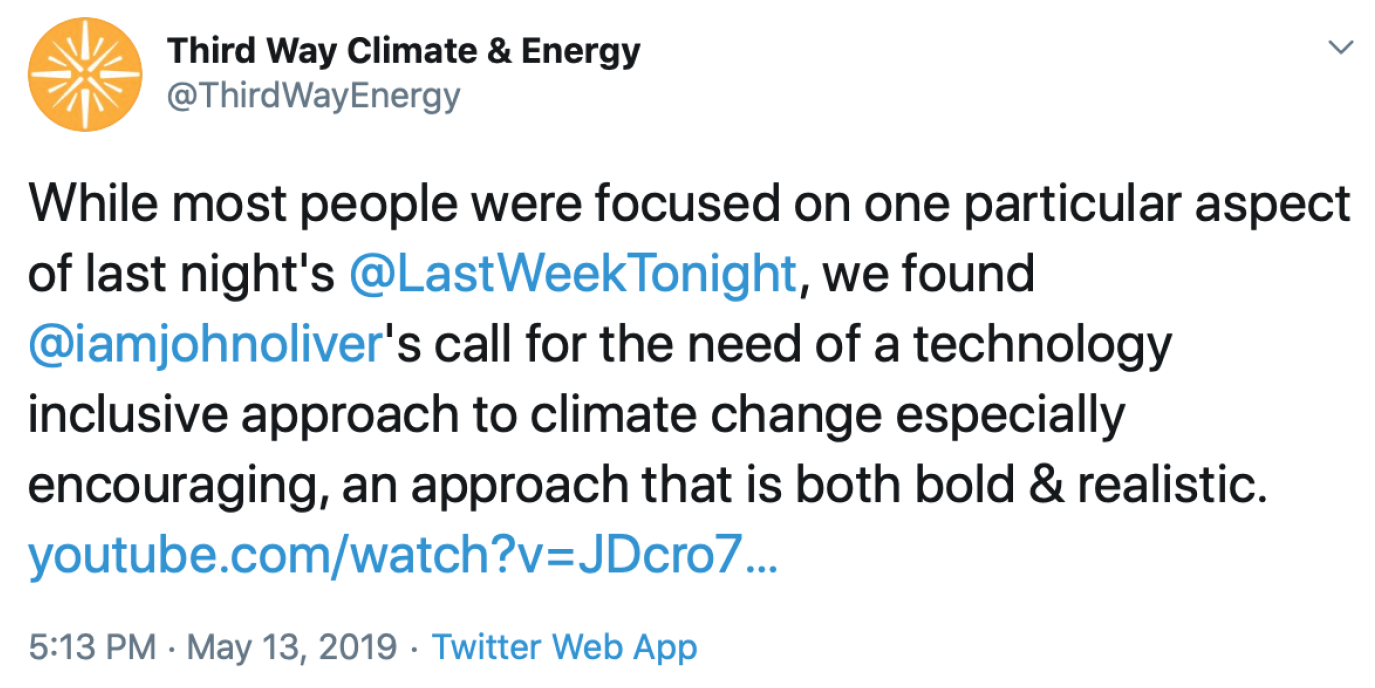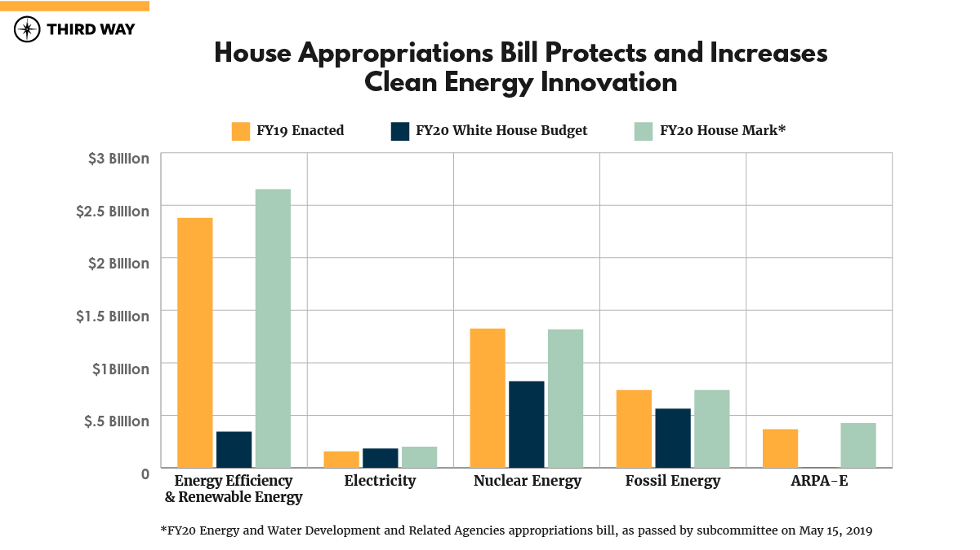Climate & Energy Communications Cheat Sheet 5/17/19

Did you know that one in five Americans now live in states committed to 100% clean power? Just last week, Washington joined recent clean energy leaders like Nevada, California, Hawaii, New Mexico, Puerto Rico, and Washington D.C., in passing similar legislation. As Josh Freed, Senior Vice President of the Clean Energy Program at Third Way, recently told Nathanael Johnson of Grist, “Voters and state legislatures are being pretty darn clear that there’s widespread support for getting the electricity sector to 100 percent clean...In our wildest expectations, we couldn’t have anticipated this much action this quickly.”
States, Congress, and climate advocates are coalescing around the most aggressive means to reach net zero emissions by 2050: bringing every carbon-free technology to the fight.

The Fastest Path to Zero
We were as surprised as anyone, when on Sunday night, John Oliver, on his popular series Last Week Tonight cited the need for every carbon-free technology to combat climate change, including nuclear. This is a significant shift from where he was two years ago and is consistent with climate advocates like Union of Concerned Scientists and the MacArthur Foundation beginning to embrace a technology-inclusive approach as the most ambitious and aggressive way to tackle climate change. Presidential candidates Beto O’Rourkeand Jay Inslee recently released detailed and ambitious plans to reduce US carbon emissions by mid-century using every technology available and spurring innovation to fill remaining gaps. The O’Rourke and Inslee plans have set a high bar for the rest of the candidates and establish technology inclusivity – including nuclear power – and dramatic scaling of innovation as critical components of what an ambitious plan should look like. In an encouraging sign that the Democratic party can unify around aggressive action,Rep. Ocasio-Cortez, a major progressive climate advocate, told Morning Consult she was neither for or against nuclear power but was certainly open to its inclusion in climate action.
And just last week, Sen. Tina Smith and Rep. Ben Ray Lujan introduced a national Clean Energy Standard (CES) in both the House and the Senate. Their bill would require utilities to steadily increase their use of carbon-free electricity, virtually eliminate power sector emissions by 2050, and incentivize the development and deployment of new technologies to help us hit our goals faster and thus making them more affordable. This is what #ClimateActionNow looks like, folks.
Innovation Forward
On Wednesday, House Democrats on the Energy and Water Appropriations Subcommittee approved increased funding for important DOE energy programs that fund clean energy innovation that will be needed to combat climate change.
In a statement, Subcommittee Chairwoman Marcy Kaptur said, “This bill makes critical investments toward combating climate change... This bill rejects the President’s drastic and short-sighted proposed cuts – including a 12% decrease to the Department of Energy, a 31% decrease to the Army Corps of Engineers, and a 28% decrease to the Bureau of Reclamation – and instead increases investments to these important programs. Investments at these agencies keep our nation at the forefront of global energy innovation...”
Take a look at the graph below we put together that shows how projected FY20 DOE program levels approved by the subcommittee are increased from current FY19 levels and put the Trump Administration’s suggested levels to shame:

Talking Points
- While innovation alone won’t solve the climate crisis, it’s critical that we continue to improve on today’s clean energy technologies and invent what we still need, in addition to deploying currently-available carbon-free resources.
- The bill allocates $37.1B to the DOE ($1.4B more than FY19), much of it going to support or increase RD&D investments across a wide range of fuels and technologies to drastically cut carbon emissions.
- This bill will ultimately need to be negotiated with whatever funding plan the Senate puts together. Democrats clearly understand the urgency of investing in clean energy innovation to fight climate change. We hope that the growing number of Republicans starting to acknowledge the role DOE plays in this effort will step-up and provide the funding for RD&D that will not only help cut carbon but will also create new jobs and make the U.S. more economically competitive.
Subscribe
Get updates whenever new content is added. We'll never share your email with anyone.

